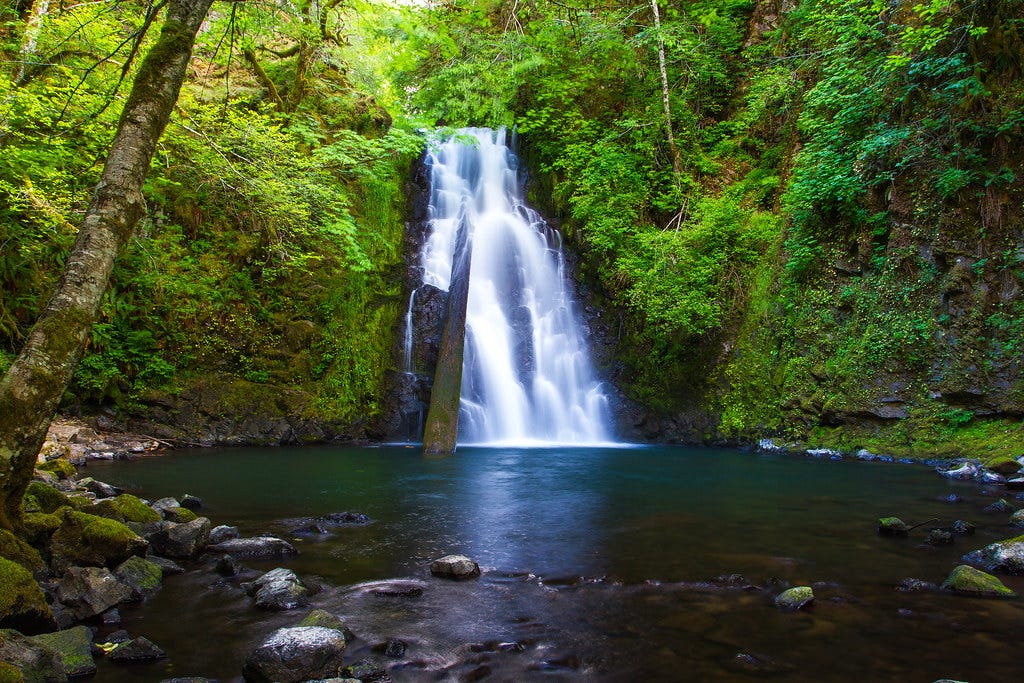Future Water Woes Demand Action Today
Rain-soaked Oregonians may doubt that water scarcity could ever be an issue. But, in some parts of the state, we live in a land of water overabundance and also of failing drinking water systems.
It is raining and it will keep raining. It feels like it has always been raining.
Rain-soaked Oregonians understandably doubt that water scarcity could ever be an issue here. But, in some parts of the state, we live in a land of water overabundance and also of failing drinking water systems due to quality, quantity, and infrastructure issues. As a result, city and rural drinking water is at risk (Monroe, Warm Springs, Klamath, Yamhill, Willamina, Wheeler, Corbett, Salem, and on and on) from climate change, logging practices, and a lack of investment.
Climate change will extend our dry season and make our wet season more peaky, reducing water supply and quality. The coming natural reasons for water shortages will be exacerbated by infrastructure failures. Water systems are failing due to age and the inability of cities, like Monroe, to pay for the costs of upgrades from their rate base
There are a number of movements to address the pending water shortage by improving and protecting forested watersheds. Our U.S. Senators introduced and are in the process of amending an update and expansion of the Wild and Scenic Rivers Act. Under this Act, the expanded stream side buffers on federal lands will slow winter rains, filtering out chemicals and sediment while recharging aquifers and stream base flow.
Another effort comes from the Private Forest Accord, which was just released from confidential negotiations between conservation groups and timber companies, and is now headed to the Legislature. The Accord proposes to increase buffers and protections on private and state timberland (including adding headwaters).
Additionally, the Environmental Protection Agency is imposing strict regulations on mercury in runoff heading to the Willamette River. The goal is to lower toxicity in fish that Oregonians eat. The mercury rules require local government, farms, and forests to nearly eliminate soil erosion into water ways.
Finally, there’s a natural movement underway: beavers make more water in times of need by slowing water and spreading it out for the rest of us to use during the summer drought. They do so by building a landscape resistant to fire. We need to protect these beavers, not kill them.
Drinking water issues are not limited to quality and quantity. We must also find ways to pay for infrastructure repairs and upgrades. Cities large and small struggle to cover the costs with their existing rate base. You may wonder why municipalities can’t just use property taxes to cover the gap? The answer is because property taxes are artificially constrained by Measures 5 and 50.
So, what can we do?
First, we can reform the ballot measures in a way that protects vulnerable and income-limited Oregonians while releasing property values and assessments from the artificial constraints imposed by the original measures
Second, we need to identify long-term funding sources. The historic funding coming from the federal infrastructure bill will cover some of the most urgent city water repairs. But, these are one-time funds. We need shore up the long-term finances of water systems. Re-instating the timber severance tax would generate as much as $180 million annually from timber sales. This is reliable funding that goes straight to local governments for these investments.
Why does this matter to Oregonians who don’t struggle with water issues? Water is related to other urgent issues like housing. If a rural community lacks water, they have to shelve subdivision proposals, and our housing deficit grows. When we underinvest in one region, we all feel the effects. I’ve found this paper in Science Magazine helpful for studying this issue. Check it out.
Healthy habitats are necessary for healthy salmon, even if the salmon aren’t in that specific area in any give year, and the same goes for Oregon. We need healthy urban and rural areas, even if we don’t live there. We need all the parts. We need each other. And we need to act on water quality and quantity.
Yamhill County Commissioner, veggie and cannabis farmer, Democrat for Governor 2022, ecologist, father & husband, left-handed.
Photo credit: "Willamina Falls" by Jordan Hackworth is licensed under CC BY-NC-SA 2.0





I question using the word "artificial" to describe property tax limits. Voters are the ultimate authority, not the elected officials who raise taxes. Property taxes in Multnomah County are very high, much higher than in San Diego County, when I lived there about ten years ago. We also have robust state income taxes in Oregon. I agree there is a need for the programs described in this blog, I just think there must be other sources of income to implement them. Perhaps existing tax revenues could be reallocated. It's doubtful that all of it is being used wisely.